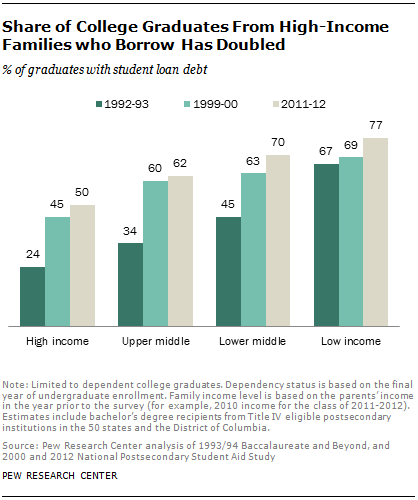Taxpayers subsidize private elite universities at a rate that is ten times higher than that for public universities. Generous tax deduction policies are the reason for this imbalance, according to Robert Reich’s opinion piece, “The Ivy League is ripping off America”.
Government subsidies to elite private universities take the form of tax deductions for people who make charitable contributions to them. In economic terms a tax deduction is the same as government spending. It has to be made up by other taxpayers.
These tax subsidies are on the rise because in recent years a relatively few very rich people have had far more money than they can possibly spend or even give away to their children. So they’re donating it to causes they believe in, such as the elite private universities that educated them or that they want their children to attend.
Private university endowments are now around $550 billion, centered in a handful of prestigious institutions. Harvard’s endowment is over $32 billion, followed by Yale at $20.8 billion, Stanford at $18.6 billion, and Princeton at $18.2 billion….
Because of the charitable tax deduction, the amount of government subsidy to these institutions in the form of tax deductions is about one out of every three dollars contributed.
Tax deductions boost per-student government spending at elite private universities to amounts significantly higher than spending at public universities.
The annual government subsidy to Princeton University, for example, is about $54,000 per student, according to an estimate by economist Richard Vedder. Other elite privates aren’t far behind.
Public universities, by contrast, have little or no endowment income. They get almost all their funding from state governments. But these subsidies have been shrinking….
That means the average annual government subsidy per student at a public university comes to less than $4,000, about one-tenth the per student government subsidy at the elite privates.
A flat tax could be the solution.
Reich asserts there is no justification for this inequity, but does not go so far as to propose cutting tax deductions for contributions to private universities. Perhaps he agrees with the majority of Americans who favor a flat tax, which would likely eliminate most deductions, including those for contributions to private universities.
———
Robert Reich, “The Ivy League is ripping off America!”, Salon, October 16, 2014.


